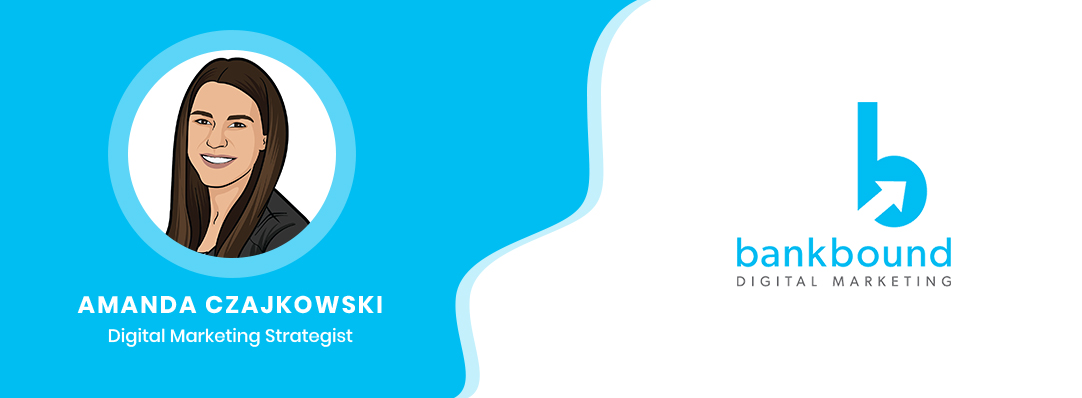Google Advertising
Running into issues with your Google Ads campaigns not performing well? You’re not alone. In the world of digital, Google Ads reign supreme as the go-to ad platform for marketing and promotion. Even if you think you have Google Ads figured out, you may still face unexpected challenges when it comes to running successful campaigns for the short or long-term. There are a lot of moving parts that go into managing campaigns in Google Ads, so knowing where to begin to solve some of these issues may feel overwhelming. We’ll cover some of the most common reasons your Google Ads aren’t performing well and the steps you can take towards resolving them.
Problem #1: Policy Issues & Disapproved Ads
One of the more challenging problems banks and credit unions run into with Google Ads and setting up campaigns is policy violations and disapproved ads. Google Ads has a number of advertising policies about what types of content you can and cannot run ads for, and financial services have a number of policy guidelines. Specifically, Google Ads has policy guidelines for advertising personal loans and high APR personal loans, financial products and services disclosures and fees, loan modifications, credit repair services, debt services, and cryptocurrencies.
If your ads violate any financial services or other Google policies, you will get a notification in your Google Ads account via the Policy Manager. In the Policy Manager, you can see which ads or extensions have been flagged for policy violations and what policy is being infringed upon. From there, take the necessary steps of correcting the discrepancy or appealing the violation if you believe your ad has been incorrectly flagged, which does happen from time to time. There is a slew of additional why Google can deny or disapprove ads – copyrighted content, trademarked names, destination not working, incorrect punctuation or symbols, low image quality, etc.
THE FIX: Check the Policy Manager located under the Setup category in the Tools and Settings dropdown menu. Review any disapproved ads and violations and take the necessary steps to correct the discrepancies or appeal the violations if applicable. Make it a point to review all ads before publishing to make sure they are in line with all policy guidelines to save yourself some trouble later and get your ads up and running sooner.
Problem #2: Ineffective Geotargeting Parameters
When setting up campaigns in your Google Ads account, there are a few targeting factors that need to be set up for ads to run. One of those targeting factors is location. Locations must be targeted by city, county, or surrounding radius. Ideally, you want to target locations where you want to reach users with ads. For banks and financial institutions, it makes the most sense to set geotargeting radiuses to include locations in your markets and surrounding areas where you have branch locations. You also might consider targeting areas that the bank wants to expand into in the future as well.
Your ads will only show to users within the selected locations. If you do not set the location parameters for campaigns, your ads will not get shown to anyone. You also want to make sure that the geotargeting for campaigns is neither too narrow nor too broad. If your location targeting is too narrow, there may not be enough search traffic to trigger your ads to show. If your location target is too broad, you could be generating enough searches to trigger your ads to show but find you’re not getting the clicks and conversions you’d expect to see because you’re not reaching the most qualified users in your market areas.
Google is quick to flag ads that – intentional or not – appear discriminatory based on geographic targeting. For example, it may seem like a promising idea to promote a checking account in the ZIP codes nearest to your branches; however, doing so will almost always signal to Google that a form of redlining may be happening. Ad campaigns using Zip code targeting will almost always not run.
THE FIX: Review campaign settings to check geotargeting parameters. If targeting is too narrow, expand the targeting radius. If targeting is too broad, focus the targeting to a tighter radius around your market areas. Also, do yourself a favor and never target by ZIP code.

Problem #3: Keyword Issues & Discrepancies
Keywords are a major factor when it comes to building successful campaigns, and ads, and selecting the right keywords can be tedious. Your ads are triggered to show to users based on keywords in their search queries. If you are targeting keywords that aren’t getting a lot of traffic from month to month, then the ads you have running in that campaign tied to those keywords won’t be displayed to users as often as you would like, and will not deliver a meaningful amount of impressions. This is why you want to complete keyword research before setting up your ads to make sure you’re generating the most traffic as possible.
THE FIX: Utilize Google Ad’s Keyword Planner tool. Review which relevant keywords are generating substantial traffic. Choose a few high-volume keywords to target in your campaign to help drive impressions, clicks, and conversions to your ads.
Problem #4: Low Quality Score
Quality Score is a metric that is tied to your Google Ads account and can affect how well campaigns and ads run. It is a monitoring metric for a combination of several different components, all of which have an impact on your ads. By adjusting and fine-tuning these different components you can boost Quality Score, in turn helping your ads run more effectively Those factors include Click-Through-Rate (CTR) of your ads, Keyword Relevance, Ad Relevance, Landing Page Relevance, and Historical Performance of your Google Ads account. A high Quality Score means that Google has elevated confidence that your ads, keywords, and landing pages are relevant to users’ search queries and intent.
Having a low Quality Score also has an impact on how much it will cost your ads to run. The lower your Quality Score, the more you’re going to be paying. It can be tricky to determine which factors are contributing to a less than stellar Quality Score. Ideally, your targeted keyword list, ad copy, and final landing pages will be relevant from the get-go.
THE FIX: Start by reviewing ad your keywords, ad copy, and landing pages – are they relevant enough to each other? Are the targeted keywords supporting ad copy? Does the ad copy support the landing page content? Pause low traffic, low-quality keywords. Test out a few different variations of ad copy to see what generates the best CTR.
Problem #5: Unrealistic Budget
Banks all have budgets for marketing and digital reach that they must adhere to, but sometimes more is better. And that is especially true when it comes to campaign budgets. Budget limitations are one of the most common reasons why you’re not seeing the growth and performance that you were expecting. Most often, banks have monthly budgets for what they can spend on Google Ads, and then with that monthly budget, campaigns are each set a daily budget. Once a campaign reaches its daily budget, your ads in that campaign won’t be running anymore until the following day.
Depending on the volume of your targeted keywords, you could be running through your daily campaign budget with just a handful of clicks. If a campaign’s daily budget is set at $20.00, and the keywords you are bidding on are going for anywhere between $5.00 to $10.00 per click each, you’ll exhaust that daily campaign budget very quickly. If you have a larger monthly budget, then your campaign daily budgets will be able to be higher, your campaigns will run longer throughout the day and month, and reach more users.
THE FIX: Increase your monthly budget – there really is no other way around it. If you want to see substantial and meaningful growth of your campaigns, then they need the opportunity to do so. With a restricted budget, you will only be able to generate a certain level of performance that may not be what you had in mind. Another solution could be to run fewer campaigns at a higher daily budget each. This would allow the budget to be concentrated on the success and growth of a smaller number of campaigns instead of more campaigns performing at not-so-great levels.
Ready To Get Your Google Ads Campaigns Running?
At BankBound, we’re financial marketing nerds. We focus exclusively on digital marketing solutions that grow local banks and credit unions. We understand your needs and the challenges you face as a bank marketer. We’ll work with you to formulate and implement an effective PPC advertising strategy to attract more customers and expand your brand’s visibility online. If you’re ready to reach new customers and increase traffic to your website, request a no-pressure consultation or talk with a strategist about your digital marketing plan today!


